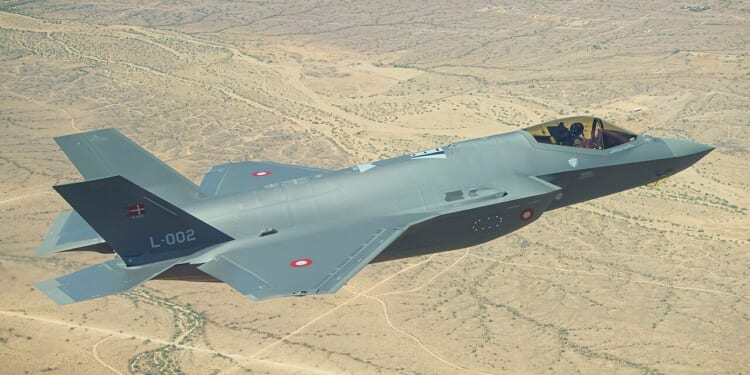To date, Lockheed Martin has sold more than 1,100 F-35s around the world, making it among the most successful combat aircraft programs of the post-Cold War era.
Months after multiple NATO members voiced concerns about adopting the Lockheed Martin F-35 Lightning II fifth-generation fighter, Denmark announced it would increase its order of the multirole stealth aircraft. It is a sign that fears about the United States downgrading the capabilities of aircraft supplied via foreign military sales are now being dismissed, along with concerns about a rumored “kill switch” that could disable the Lightning II entirely.
With most NATO countries in agreement to increase defense spending to counter Russia’s aggression, the F-35 remains in high demand.
Copenhagen had initially concluded a deal in 2016 to purchase 27 F-35s, but it will now increase its order to 43 fighter jets.
“With the acquisition of 16 additional F-35 fighter jets, we deliver a historic strengthening of the Danish Air Force and the Danish Armed Forces. I am very pleased that we have concluded this agreement on the additional F-35 acquisition, which significantly increases the combat power of the Danish Armed Forces,” said Danish Minister of Defence Troels Lund Poulsen.
The Danish Air Force has operated the F-35 domestically since October 2023, when the first Lightning IIs arrived at Fighter Wing Skrydstrup. As of late 2025, 15 F-35s have been delivered to Denmark, with six still in the United States for training. The remaining dozen of the initial order are on track to be delivered by the end of 2026, with Denmark set to reach full operational capability (FOC) in early 2027.
This past April, the first Danish Air Force F-35 took part in air defense interception operations, flying alongside the aging F-16 Fighting Falcons.
Belgium Also Increased Its F-35 Purchase
On Tuesday, the first F-35A Lightning II arrived at Florennes Air Base, Belgium, flown in from Lockheed Martin’s facility in Fort Worth, Texas. It marked a milestone for the alliance member and follows the delivery of eight Lightning II fighters to the Belgian F-35 Conversion Unit (BEL F-35 CU) at Luke Air Force Base (AFB), Arizona, where training has been underway this past January.
“With the F-35, Belgium is reclaiming its place among the world’s leading air forces, equipped with the most advanced technology, integrated within a multinational and interconnected environment,” said Major General Geert De Decker, Commander of the Belgian Air Force.
The small Western European nation recently increased its program of record for the fourth-generation stealth fighters. Initially, Brussels had called the Belgian Air Force to operate 35 F-35s, with the fleet to be operational by early 2031. The initial number of fighters was deemed inadequate for the country’s defense needs. However, after publishing its “Strategic Vision” document, which addressed these needs, it was determined that the Belgian Air Force would require 46 F-35s. The original order will be completed at Fort Worth, and the additional 11 aircraft will be built at the Cameri final assembly and check (FACO) facility in Italy.
Lockheed Martin Locks Down Additional Sales
Aerospace giant Lockheed Martin was awarded additional contracts at the end of September valued at a combined $24.3 billion to build 294 F-35 Lightning IIs, including for the United States military, partners, and allied nations.
“The F-35 Lot 18-19 contract represents continued confidence in the most affordable and capable fighter aircraft in production today,” Chauncey McIntosh, Lockheed Martin vice president and general manager of the F-35 Lightning II program, said in a statement. “We are proud to support our customers and further solidify the F-35’s role in enabling peace through strength.”
To date, more than 1,100 F-35s have been delivered around the world, making it among the most successful combat aircraft programs of the post-Cold War era.
After losing the contract to build the sixth-generation manned fighter for the United States Air Force’s Next Generation Air Dominance (NGAD) program, Lockheed Martin proposed developing a more advanced F-35 that would incorporate sixth-generation technology and serve as a more affordable bridge to the Boeing F-47, which is expected to take its maiden flight no sooner than 2027.
About the Author: Peter Suciu
Peter Suciu has contributed over 3,200 published pieces to more than four dozen magazines and websites over a 30-year career in journalism. He regularly writes about military hardware, firearms history, cybersecurity, politics, and international affairs. Peter is also a contributing writer for Forbes and Clearance Jobs. He is based in Michigan. You can follow him on Twitter: @PeterSuciu. You can email the author: [email protected].
Image: Wikimedia Commons.

















